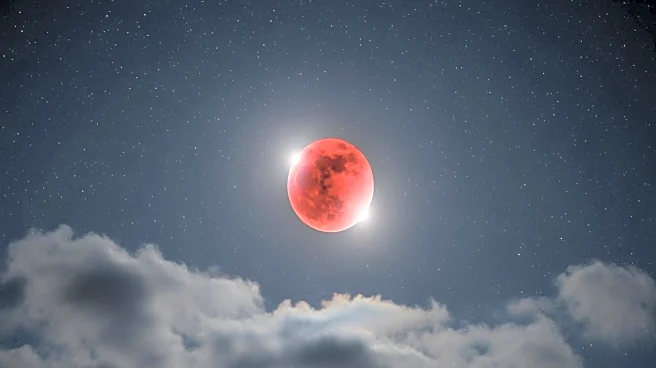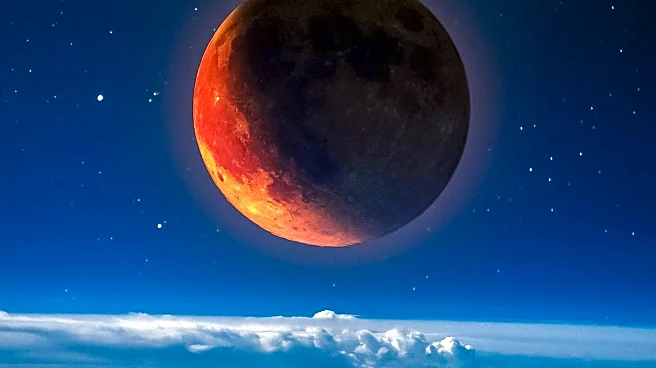What's Happening?
A total lunar eclipse, known as a blood moon, will occur on September 7, 2025, coinciding with the Corn Moon. This celestial event will be visible across Europe, Asia, Africa, and Australia, but not in the United
States. The blood moon's red hue is caused by Earth's atmosphere scattering blue light and allowing red wavelengths to illuminate the moon during the eclipse. The Corn Moon, a cultural marker for the September harvest, will reach peak illumination at 2:09 p.m. Eastern Time. The eclipse will last for 82 minutes, with the best views in Asia and parts of Africa and Australia. The event offers a unique opportunity for astronomers to study Earth's atmosphere, as the way sunlight filters through it during the eclipse can reveal information about dust and clouds.
Why It's Important?
Lunar eclipses, unlike solar eclipses, are safe to view with the naked eye and provide a spectacular visual experience. They also offer scientific insights into atmospheric conditions on Earth. For many cultures, the Corn Moon holds historical significance as a time for harvest and reflection. While U.S. viewers will miss this event, it highlights the global nature of astronomical phenomena and the shared human experience of observing the night sky. The next opportunity for U.S. residents to witness a blood moon will be in March 2026, emphasizing the rarity and anticipation surrounding such events.
What's Next?
Following the lunar eclipse, a partial solar eclipse will occur on September 21, visible in regions like Australia and Antarctica. This sequence of eclipses demonstrates the interconnectedness of celestial events. For those interested in future astronomical events, the next significant occurrence in Europe will be a total solar eclipse in August 2026. Meanwhile, sky watchers in the U.S. can look forward to the next visible blood moon in 2026, which will be observable along the West Coast.
Beyond the Headlines
The Corn Moon and its associated eclipse serve as reminders of the cultural and historical significance of lunar events. They offer opportunities for reflection and connection with natural cycles. The blood moon's red color, resulting from atmospheric conditions, also underscores the dynamic relationship between Earth and its celestial neighbors. These events continue to inspire awe and curiosity, bridging science and tradition.













